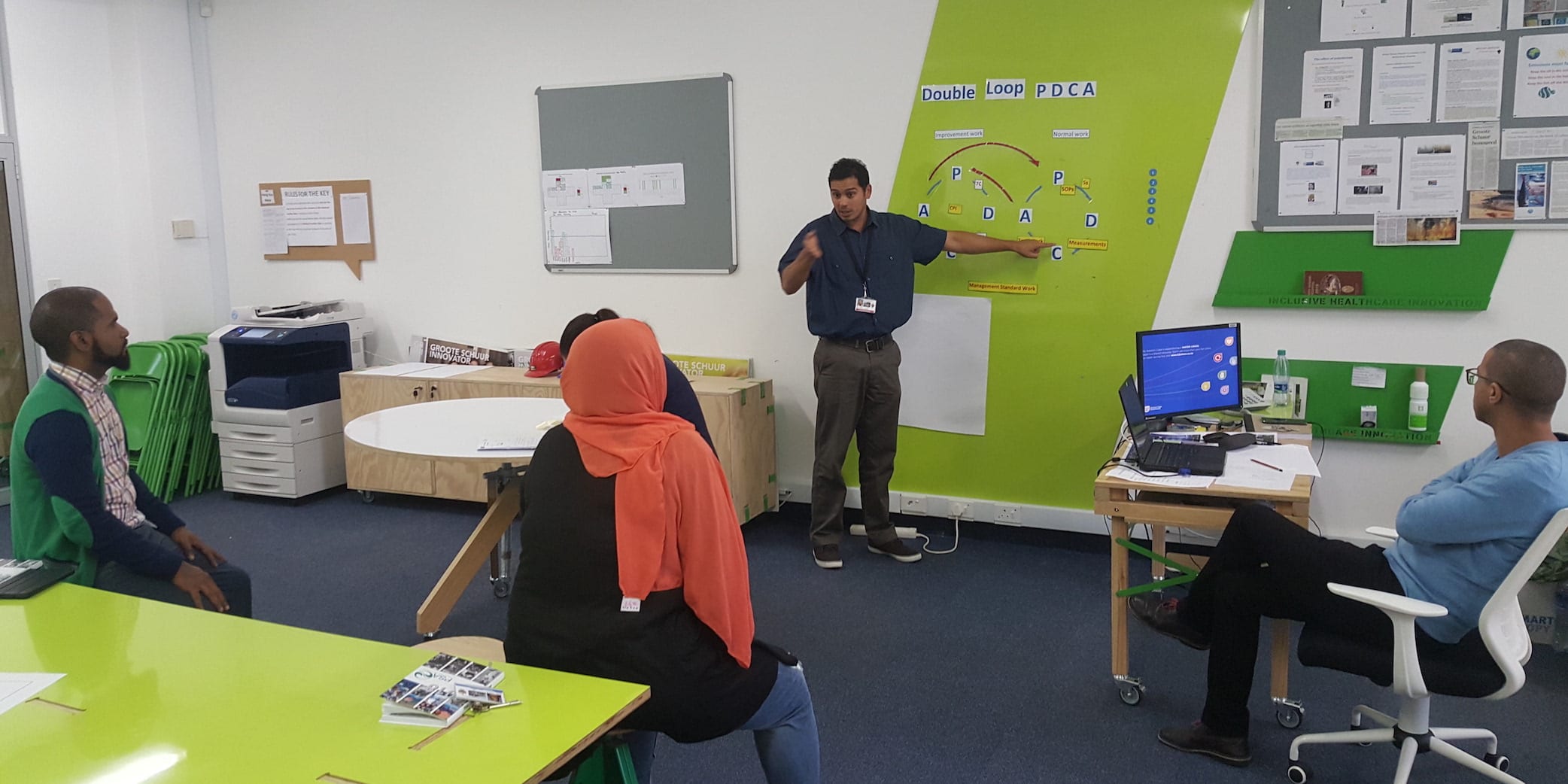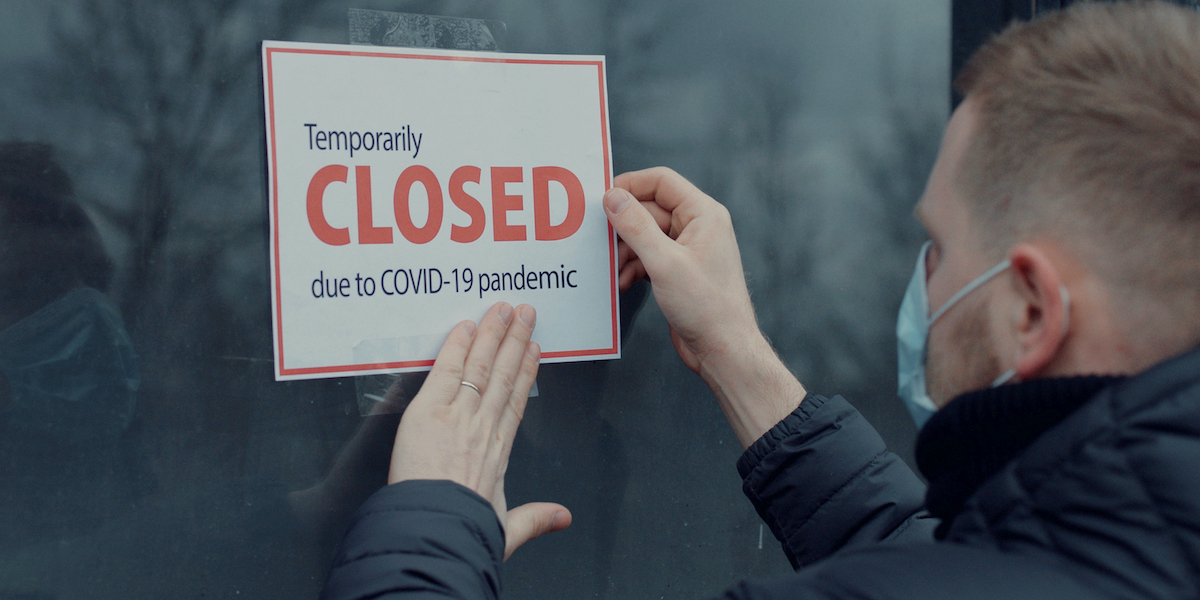
The Double-Loop PDCA
FEATURE – How “Double-Loop PDCA” was discovered due to a problem with implementing a lean daily management system in a South African hospital.
Words: Anton Grütter, Director, Lean Institute Africa
If you’re familiar with the public sector and the prevalent hospital challenges, you’ll appreciate how tough it can be to initiate improvements in this environment. Increased demand for healthcare services, amplified by escalating burden of disease, while straddling severe budget constraints, is the norm in Africa. At the same time, it is good to witness truly inspiring transformations taking place in the South African healthcare sectors despite these challenges. We think that’s cause for hope and for persevering with Lean Institute Africa’s mission to spread lean thinking and practice, and to create problem solvers everywhere.
Groote Schuur Hospital (GSH) is one such hospital. It is a 1,000-bed academic hospital on the slopes of the majestic Table Mountain in Cape Town. It faces the typical challenges that public sector hospitals face. Nevertheless, it has a proud history of innovation and last year it celebrated the 50th anniversary of the world’s first successful human heart transplant.
Under the leadership of Dr Bhavna Patel, the CEO of GSH, the organization has been on a journey to implement their own version of lean thinking applied to healthcare, known as the GSH Performance System (GPS). It is important to take the time to understand lean management and develop what works for your own organization, solving the problems that really matter to it. So, the journey at GSH started in 2014 when a pilot program in the outpatient pathway through the eye clinic and pharmacy showed that patient throughput time could be reduced by 20%. Since then, numerous other improvements have been made, such as reducing triage time in the emergency unit by more than 50% and improving on-time theater start times from 30% to 70%. Think about the impact on patient care when improvements such as these take shape. This is why we at the Lean Institute Africa strive for organizational transformation, but also transforming the lives of those touched by the positive changes.
These results are indeed very encouraging. However, the journey has also come with many twists and turns. After some time, the well-known challenge of sustaining improved performance reared its head. In a team that made excellent progress, the team leader was transferred to another unit and soon after the team’s performance started to decline – the system did not survive beyond the person. In another patient pathway, the regular meetings between units that serviced patients faltered and were eventually discontinued. Visualizing performance measurement for front-line teams has been a challenge due to manual collection of data and difficulties with extracting data from legacy information systems. But such is the nature of lean: it’s almost never plain sailing, problems will occur, and systems will falter. What’s more important is how we respond to the decline, and how we learn from this.
Over time, the team realized that doing improvement projects was not enough. People doing front-line improvement needed to be supported by management systems as described in books like Beyond Heroes by Kim Barnas and The Work of Management by Jim Lancaster. However, implementing such a daily management system in an organization as complex and large as GSH was daunting.
One of these challenges became apparent when the GPS support team were taken to task at a feedback session, when we were told in no uncertain terms that “you can’t expect us to do all these measurements, improvement projects and team meetings, when you don’t give us proper training.”
It was a bitter pill to swallow (pun intended), because the GPS support team had been working very hard. However, the truth was that the capability development approach we used was not working. People were struggling to make sense of all the strange jargon, like “A3 problem-solving”, and counter-intuitive ways of working, like taking the time to find the root cause of the problem rather than fire-fighting. They felt like we were adding to their already heavy work-load.
This led to deep reflection on how to communicate the paradox of continuous improvement and standard work for front-line teams in a way that made sense to them. Out of this adversity came the realization that Deming’s PDCA (Plan Do Check Act) cycle does not apply only to improvement work, but also to the normal daily work of service delivery. What became known as “Double-loop DPCA” also helped people to know when to switch back and forth between the improvement and normal work loops.
Check out the 6-minute narrated presentation on how the Double Loop-PDCA works here:
The results of using the Double Loop-PDCA to explain the daily management system to front-line teams was astounding. After their introduction to the system in a 30-minute session, sister Davids, one of the nurses in the Diabetics Clinic, exclaimed: “Now the lights are going on!” They went on to be the team that made the fastest progress with implementing the daily management system of all the front-line teams that started using the system at GSH.

Since then we have brought the Double Loop-PDCA diagram to all the teams we are helping to implement a daily management system. It not only serves as a reminder of how the practices that make up the front-line daily management work as an integrated system, but it is also used by the GPS facilitator to orientate front-line team members as they learn to use the DMS practices.
According to Garth Hankey, the GPS facilitator, the Double Loop-PDCA made it clear to front-line teams how the DMS practices work and helped their thinking to flow more naturally.
Now that teams see improvement projects as part of the daily management system practices, they have started to understand when to open the improvement PDCA loop based on a review of the team’s daily performance measurements. The new approach also clarified to them when to conclude an improvement project and transfer the new better way of working into an SOP that becomes part of normal work for the improvement to be sustained.
THE AUTHOR

Read more


NOTES FROM THE GEMBA – This month, the author meets a group of business leaders consistently breaking new ground in their exploration of the relationship between IT and sustainability by using a kaizen-like approach.


COLUMN – The author imagines an ideal, Jidoka-inspired response to the Coronavirus pandemic. This scenario might be utopian, but could it inform the definition of our True North?


INTERVIEW – We are used to thinking of A3s mainly as a tool for problem solving. In this Q&A, you will learn about the experience of a San Francisco hospital using it for personal development.


FEATURE – With an open-minded approach to improvement tools, a long history of quality and engaged top leaders, wire manufacturer Ducab aims to fulfil the strategic needs of the Emirates.

